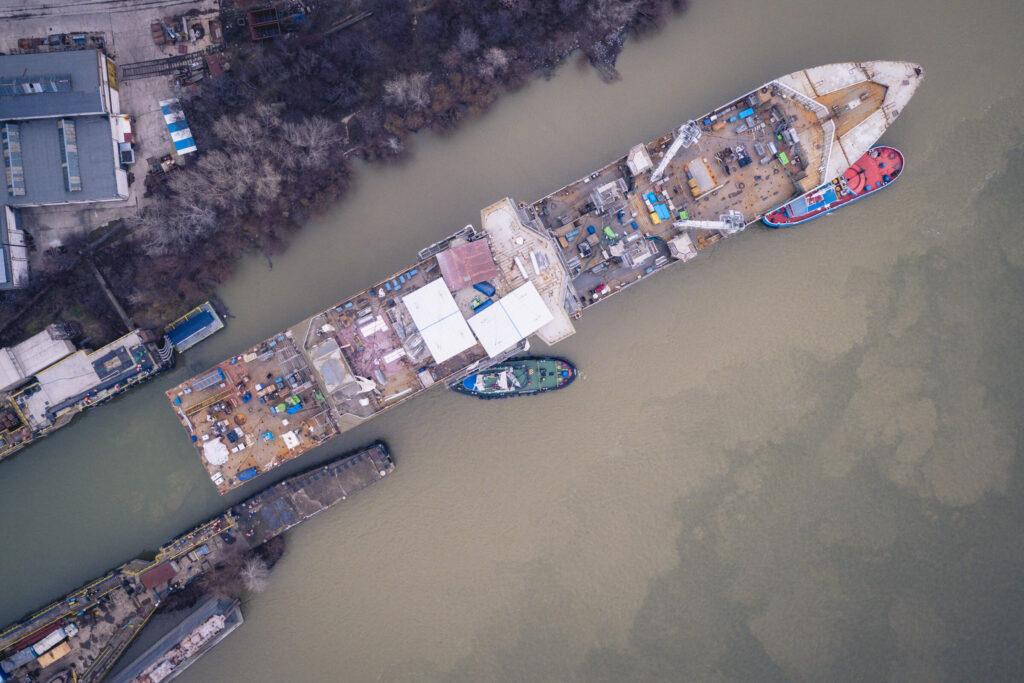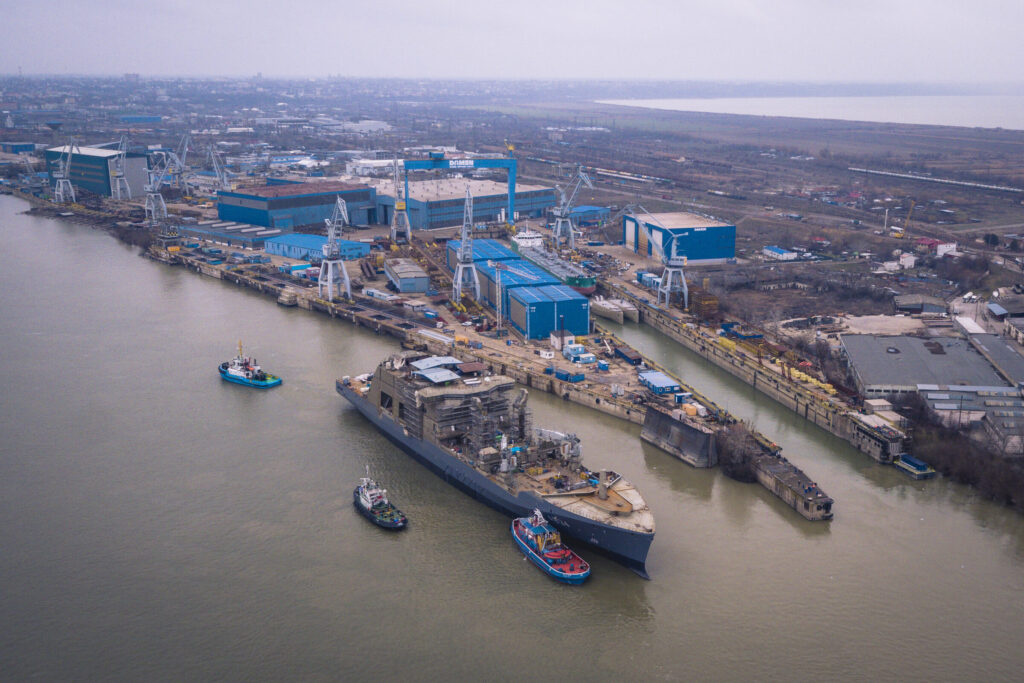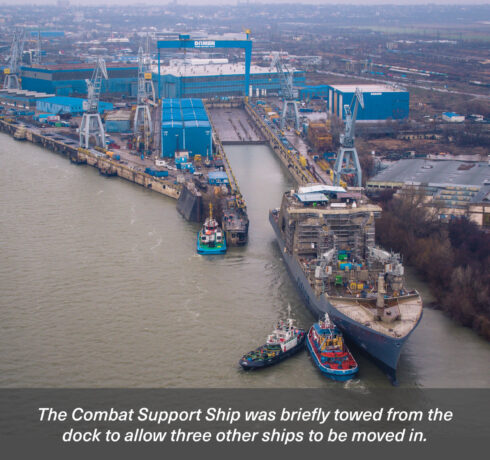Except for the mast, the hull of the Combat Support Ship Den Helder is complete. This was easy to see when the ship recently made a short trip on the Danube. Currently moored in the deeper end of the long dry dock of the Romanian yard, the CSS had to be moved to allow three other vessels to be moved behind it, into the shallow end of the dock. The relocation of the CSS was not planned in advance, but due to good cooperation, it was carried out without any problems.
 Except for the mast, the hull of the Combat Support Ship Den Helder is now complete.
Except for the mast, the hull of the Combat Support Ship Den Helder is now complete.
Starting at dawn, the CSS was carefully moved out of the dock with the help of tugs. Some 48 hours later, the ship was able to return to the dock. “Any transport involves risks of damage,” says Project Director Arjan Risseeuw. “However, this was necessary for the shipyard’s operations and we took the opportunity to take some nice photos and a film to show how the project is progressing. You can really start to see the shape of the ship now.”
"We took the opportunity to take some nice photos and a film to show how the project is progressing. You can really start to see the shape of the ship now.” Arjan Risseeuw
Over the past few months, the last superblocks of the superstructure have been placed on the ship. “On 30 January, the last block was placed. We are now preparing to install the mast, but that is quite complex,” Arjan explains. “This is because the mast contains the exhaust gas scrubbers and space is quite tight, so this requires time and attention. The mast comprises an upper platform and two legs and these will probably be installed in one piece at the end of February or the beginning of March, at which point, in terms of section construction, the ship will be ready.”
 Three vessels were moved into the shallow end of the dock, after which the CSS was moved back in.
Three vessels were moved into the shallow end of the dock, after which the CSS was moved back in.
The scope of work for the next phase of the project includes the welding together and painting of all the superstructure sections and aligning the propeller shafts. “With the installation of the last blocks, we have the right weight distribution for the ship, as it will be at sea,” says Arjan. “To compensate for the weight of the mast, temporary blocks of concrete will be placed so that we can start aligning. That will take about six to eight weeks. Then we will be in early April, when we will start commissioning.”
During the alignment of the propeller shafts, the ship has to stay in the dock. If it was up to Arjan, she will stay there as long as possible. “The ship will eventually have to come out of the dock to the quayside if we want to start testing the large (seawater) pumps, for example. But as long as the CSS is in the dock, we can work from both sides and we can use the crane. At the quayside, we can only access it from one side or we have to work with pontoons.”
The current planning is that the CSS will be moved to the quayside around April/May 2023 at the latest, where it will remain until the sea trials that are scheduled for January 2024.

